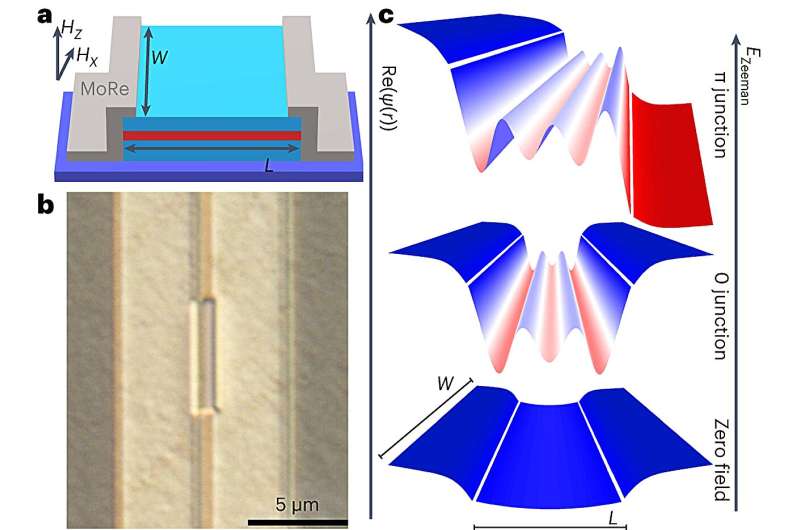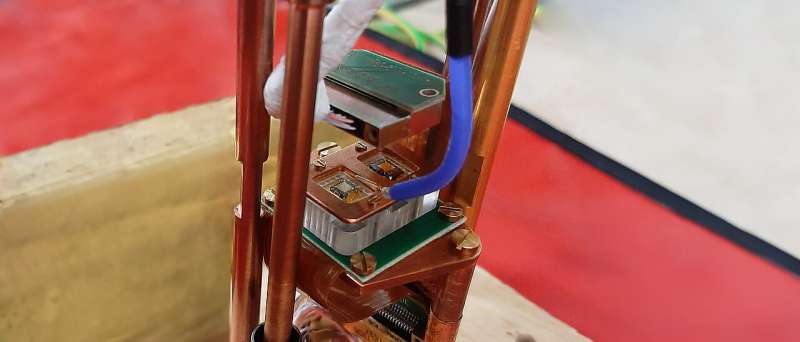This article has been reviewed according to Science X's editorial process and policies. Editors have highlighted the following attributes while ensuring the content's credibility:
fact-checked
peer-reviewed publication
trusted source
proofread
Researchers create stable superconductor enhanced by magnetism

An international team including researchers from the University of Würzburg has succeeded in creating a special state of superconductivity. This discovery could advance the development of quantum computers. The results are published in Nature Physics.
Superconductors are materials that can conduct electricity without electrical resistance—making them the ideal base material for electronic components in MRI machines, magnetic levitation trains and even particle accelerators. However, conventional superconductors are easily disturbed by magnetism. An international group of researchers has now succeeded in building a hybrid device consisting of a stable proximitized-superconductor enhanced by magnetism and whose function can be specifically controlled.
They combined the superconductor with a special semiconductor material known as a topological insulator. "Topological insulators are materials that conduct electricity on their surface but not inside. This is due to their unique topological structure, i.e., the special arrangement of the electrons," explains Professor Charles Gould, a physicist at the Institute for Topological Insulators at the University of Würzburg (JMU). "The exciting thing is that we can equip topological insulators with magnetic atoms so that they can be controlled by a magnet."
The superconductors and topological insulators were coupled to form a so-called Josephson junction, a connection between two superconductors separated by a thin layer of non-superconducting material. "This allowed us to combine the properties of superconductivity and semiconductors," says Gould.
"So we combine the advantages of a superconductor with the controllability of the topological insulator. Using an external magnetic field, we can now precisely control the superconducting properties. This is a true breakthrough in quantum physics."

Superconductivity meets magnetism
The special combination creates an exotic state in which superconductivity and magnetism are combined—normally these are opposite phenomena that rarely coexist. This is known as the proximity-induced Fulde-Ferrell-Larkin-Ovchinnikov (p-FFLO) state.
The new "superconductor with a control function" could be important for practical applications, such as the development of quantum computers. Unlike conventional computers, quantum computers are based not on bits but on quantum bits (qubits), which can assume not just two but several states simultaneously.
"The problem is that quantum bits are currently very unstable because they are extremely sensitive to external influences, such as electric or magnetic fields," says Gould. "Our discovery could help stabilize quantum bits so that they can be used in quantum computers in the future."
More information: Pankaj Mandal et al, Magnetically tunable supercurrent in dilute magnetic topological insulator-based Josephson junctions, Nature Physics (2024). DOI: 10.1038/s41567-024-02477-1
Journal information: Nature Physics
Provided by Julius-Maximilians-Universität Würzburg





















